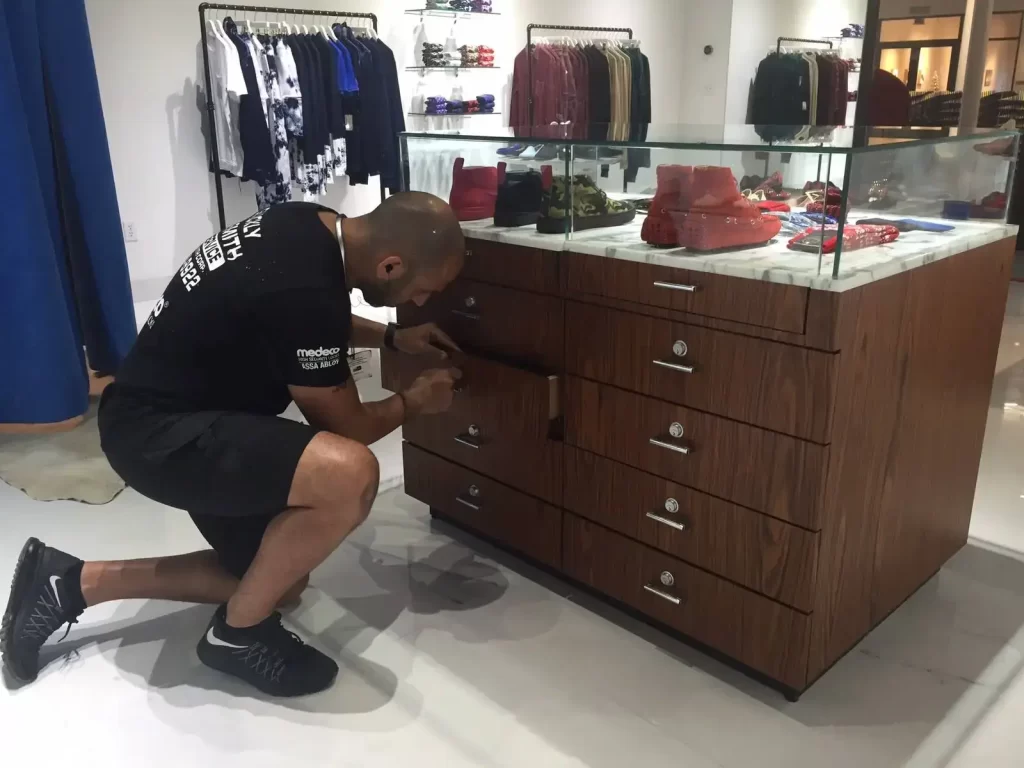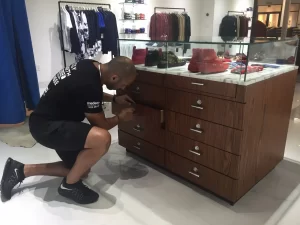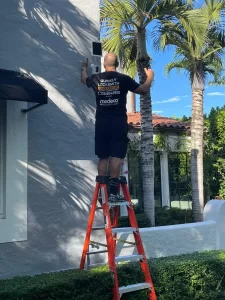Essential Tips for Keeping Art Secure In Your Home or Gallery
Whether you’re running a gallery, or you have a few collectible pieces at home, your art is important to you, and having it stolen would be a disaster.
Not only have you taken the time to carefully select these pieces, but chances are, they cost a small fortune too.
If theft has been on your mind lately and you want to reevaluate the security of your art, we have a few suggestions to share with you.
A Look at Art Theft in the USA and the World
Did you know that over 500,000 pieces of art are stolen every year? And this is just from museums and art galleries – it doesn’t account for art that’s stolen from residential homes.
When it comes to the type of art that’s most often stolen, sculptures and paintings are at the top of criminal’s demand lists, followed by ceramics and gold and silverware.
Art that was created between the 17th and 20th centuries also tends to be more popular than later periods.
What’s interesting is that a lot of art theft also occurs on the go. A high percentage of crime involving art is linked to salespeople being robbed while they’re traveling, with South American gangs being the main culprits, according to the FBI.
Art is consistently being stolen and it just takes a criminal with the right knowledge and an eye for art to know when one of your most valuable sculptures or paintings is worth stealing.
How to Protect Your Art in Your Gallery or Home
Let’s go through a few tips you can apply to make it less likely that you’ll be a victim of art theft.
Be Careful What You Post Online
While this is a hard one for galleries to get around because marketing is what gets your art sold, private art owners should be more cautious about showcasing their art online.
It’s best not to draw any attention to the art you have at home, especially if your social media profiles aren’t private. Instead, rather showcase your art to friends and family when they come over.
It’s also important not to indicate when you will be away from home on vacation, as this gives criminals a better chance of getting their hands on your art pieces.
Install a Quality Alarm System
An alarm system that’s linked to an armed security response service can be one of the best deterrents. If you already have an alarm system installed, you may want to decide whether it’s time to upgrade it.
Many of today’s leading alarms will send instant alerts to you and your security company if it’s triggered, allowing for more immediate action. Always aim to purchase the best quality alarm system that you can afford if you’re serious about protecting your art.
It also helps to regularly test your alarm and ensure it’s working as intended. Insurers generally won’t pay out if an alarm has malfunctioned.
As an added step, consider adding security cameras to your home too. If a thief is aware that they’re being watched, it greatly reduces the chances of them entering your home or getting too far into your home.
Consider Locked Cases
Depending on your budget and the value of your art, there is always the option of enclosing each piece in a locked case.
This way, even if a criminal manages to gain access to your home or gallery, they’ll have a much harder time stealing your investments. These cases are readily available online or through reputable art stores and start at around $80 per case.
Make sure that the lock on the case can’t be broken very easily – a combination or key lock is best.
The other option is to only display your most expensive art pieces when you’re expecting clients or guests and lock them away when you’re not around.
Think Twice About Where You Display Your Art
When it comes to a gallery, unfortunately, your art is always going to be on display. However, for private art owners, you may want to spread your art out inside your home. This will make it more difficult for criminals to steal all your art before your security system kicks in.
It’s also best to keep your most expensive pieces away from major windows and doors where someone could spot them from the outside, further encouraging them to find a way to get inside.
Look Into Art Guard Sensors
Gallery owners who want to keep a closer eye on individual pieces should consider Art Guard sensors.
These wireless sensors can help you better protect individual pieces of all sizes. Once placed on a piece of art, this wireless sensor will detect any form of movement, regardless of whether the art is seated or hanging.
Art Guard magnets are available in various sizes and can be fixed to any piece thanks to the chemical-free adhesive. What’s more, the sensor is hidden from view, so it won’t affect your displays. It also never touches the asset, so you don’t need to worry about battery acid affecting your art piece.
Each sensor also has a unique ID, which means you will receive a customized response should a particular piece of art move. This response could be an alarm trigger, a call to the police, or a simple text message to your chosen mobile device.
These sensors can transmit a signal from over 400 feet away, making them ideal for galleries of all sizes.
Hang Your Art Using T-Screw Hangers
Gallery owners who want to keep a closer eye on individual pieces should consider Art Guard sensors.
T-Screw hangers are designed to reduce the risk of art theft. The reason why these screws are different is that you need a special T-Screw Security Wrench to rotate the screw, making it next to impossible for a criminal to remove.
Even though they’re difficult to remove without the specialized wrench, the screws themselves are easy to install.
Get Clear On Your Insurance Coverage
Not all homeowner and renter’s insurance cover art. And, if they do, the coverage may no longer be sufficient based on the current value of your collection.
Make a point of reviewing and updating your policy regularly. You can also work with an appraiser to ensure that your coverage is accurate based on fluctuations in art value.
The same applies to business insurance – make sure that you have adequate coverage for your art pieces.
If you ever travel with art, this may require special coverage. Make sure that you understand the limits of your coverage when art is away from your gallery. Your insurer may even have specific requirements that need to be met when transporting art such as using a pre-approved transport service provider.
Regularly evaluating your insurance policy also means you may be able to save on premiums based on the current value of your art collection.
Speak to a Professional
One of the best ways to secure your home and your gallery is to consult with a professional locksmith.
Not only will they help you evaluate your alarm and camera system, but also the rest of your home or gallery space too.
The point is to prevent criminals from accessing your space at all, so looking at your entry points, including windows as well as the area surrounding your property is essential. Countless home and business owners are making the switch to digital and biometric locks, making it much more difficult for unauthorized people to enter a space.
Even having a lot of dense greenery and shrubbery around your home or building can pose a security risk. Simply keeping your surroundings clear and well-lit can go a long way in deterring potential criminals.
Steps to Take If Your Art Is Stolen
Realizing you’ve become a victim of art theft is less than ideal. Even more so if you’ve personally taken the time and effort to curate specific pieces, or you’ve inherited art from family. The sentimental value of these pieces can never be replaced.
So, what should you do if you get to your gallery or walk into your home and realize you’ve been robbed?
Don’t Tamper with the Crime Scene
One of the most important first steps is to leave the crime scene as untouched as possible. Walking around the space too much and touching or moving anything could prevent the authorities from gathering the evidence they need to potentially get your art back to you.
If it’s your home that’s been robbed, it’s best to remove yourself, family, and pets from the home until the authorities arrive. You never know if a thief may still be present in your home.
Galleries should immediately close their exhibition until the police have done what they need to do.
Alert the Authorities
Your first call should be to your local police department. They will be able to secure the area and start gathering evidence. There will be instances when other authorities will get involved such as the FBI Art Crime Program.
The incident report you receive from the police will kickstart investigations and give you the paperwork you will need for insurance purposes.
Be sure to mention whether you think the burglars may still be in your home so that they understand the urgency of the situation.
Gather Essential Information
The police will need specific details on exactly what art pieces were stolen. As an art collector, you should have detailed records of each of your art pieces.
This could include everything from photos and the bill of sale to appraisals and any other information on the artist and piece. Basically, you want to make it as easy as possible for the authorities to identify each piece.
If you have cameras installed, now is the time to pull up any relevant footage. The police will also want to speak to anyone who may have been present during the robbery.
Contact Your Insurance Company
Once the authorities have done what they need to do, you can contact your insurance company. It’s important to alert them to the theft as soon as possible.
Not only will they need a report number from the police, but details on each of the pieces that were stolen. If any other items were stolen or property was damaged during the robbery, it’s important to outline this to your insurer too.
The art claims process can be a lengthy one in many instances and will start with an evaluator visiting your property to take photos and assess any damage.
Having a detailed inventory of your art can really help speed things up during this process. Artwork Archive is just one of the platforms you can use for this purpose.
Follow Up
Once the police and your insurer have all the information they need, it’s mostly a waiting game. However, it helps to follow up regularly to ensure the investigations are progressing as planned and to get any updates on potential art recoveries.
There have been instances where valuable art pieces have been recovered and returned to their owners, but it’s important for the authorities to move quickly. Having as much evidence as possible also helps, which is why it’s important not to tamper with the crime scene.
Final Thoughts
Art is such a unique and fulfilling investment, one that you should protect at all costs. Art theft happens, but by taking the right steps from the start, you can mitigate these risks as much as possible.
Make a point of working with a professional locksmith on a regular basis to evaluate your current security system. You never know when a camera system might malfunction or if it’s time for an alarm upgrade. Properly securing entry and exit points can also make a notable difference.
Partnering with a local locksmith such as Quickly Locksmith Miami also means you can benefit from their knowledge of crime and security trends in your local area. The tactics that criminals use from one area to the next can differ, so it helps to know what you should be focusing on.







